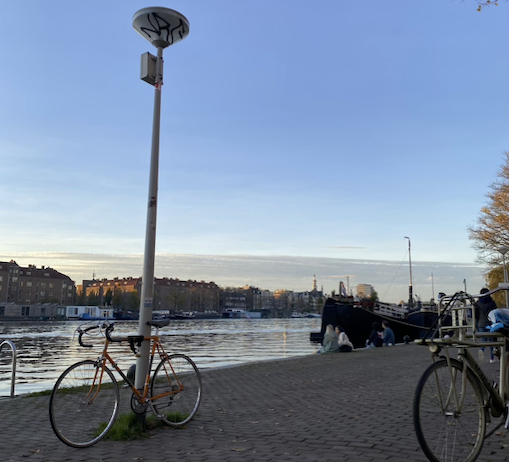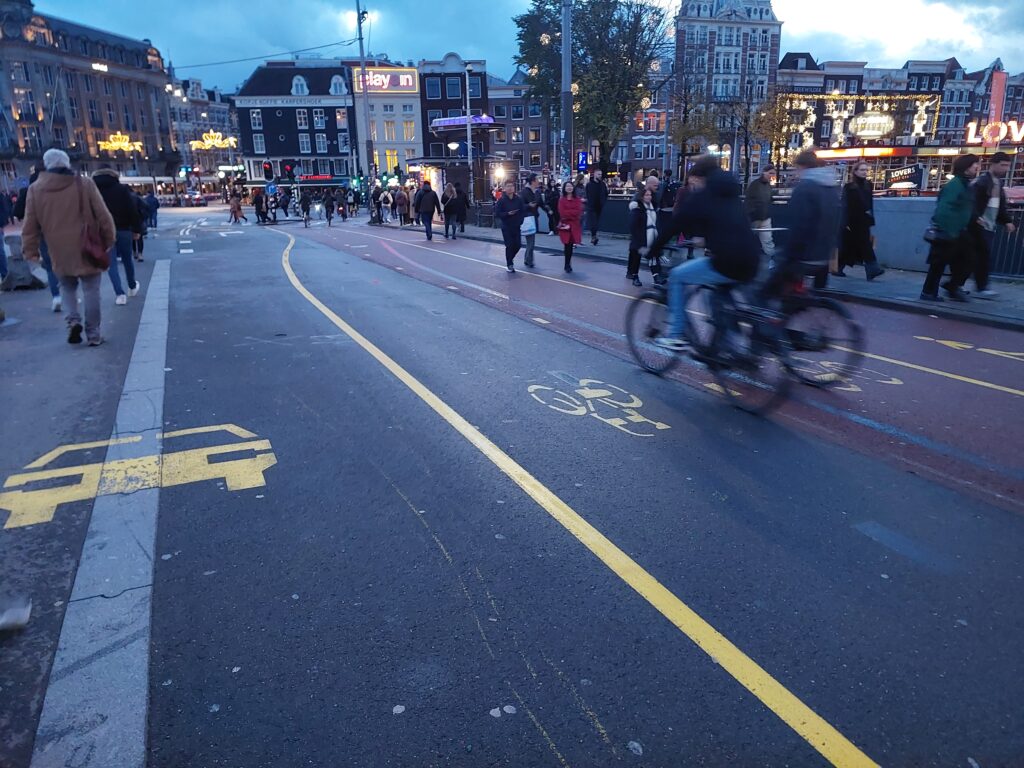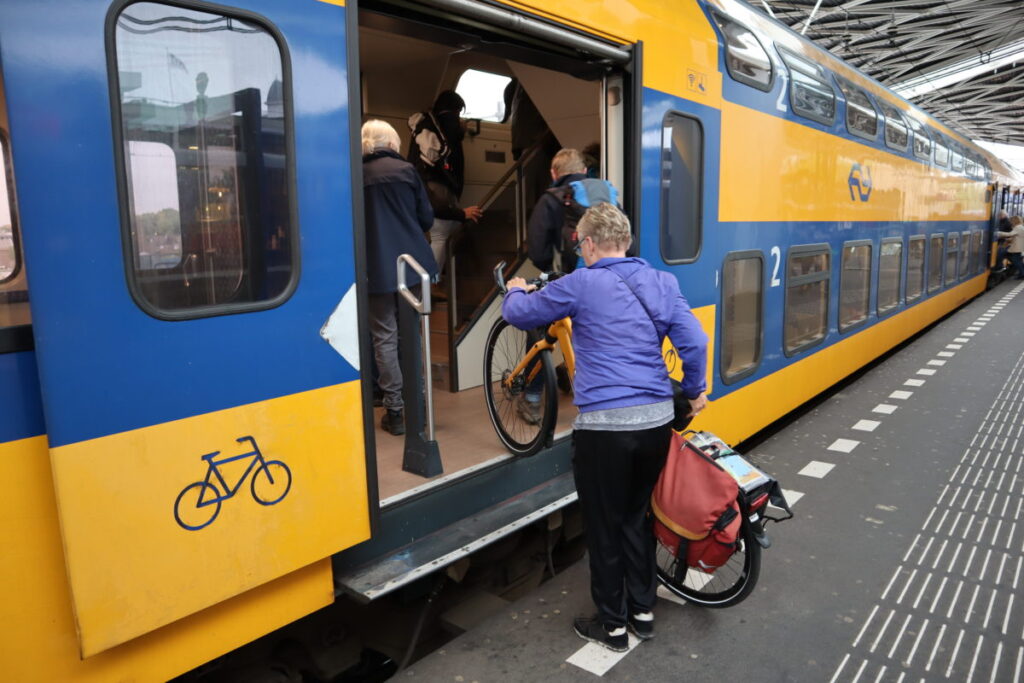Sutapa Tasnim | LinkedIn
Selected final essay, published 18 November 2020
Sutapa is an Architect with Master’s degree in Urban Planning. She is passionate about urban design and user behavior. She is currently working on a government project for sustainable urban transport.
Unraveling the Cycling City MOOC on Coursera
Up until recently cycling has usually been thought of by the majority of the people in Dhaka as a recreational activity or as a transportation mode only for the poor. But the standstill traffic in a mega-city of 18 million with a population growth of about 4.2% annually has made cycling become popular as a faster way to commute by weaving through traffic (Statistics, 2020). This popularization of cycling has been helped by a Facebook group, BDCyclists, and their numerous events similar to those in mid-20th century Amsterdam (Zaman, 2019; Zee, 2015). In addition to campaigns for bike infrastructure, the mayor of Dhaka North City Corporation (DNCC) has recognized the growing trend of regular, everyday people using bikes to commute and the need to offer safety measures. (Chaity, 2019)
Dhaka’s transport infrastructure has always focused on its automobiles. Rarely any attention was paid to its pedestrians and almost no attention was paid to its cyclists (Gupta, 2019). As a result, people seen riding a bike were a rare occasion up until 2011, when the Facebook group, BDCyclists, a Bangladeshi non-governmental organization, opened and created a community for people who liked to cycle for health and recreational reasons. It was started by software developer Mozammel Haque and his friends in May 2011 to advance and promote cycling amongst the youth. Mozammel Haque discovered the pleasure and cost-effectiveness of cycling in 2009 when he was travelling in Nepal (Farhana, 2015). The BDcyclists’s facebook group now has over 132.6K members, the majority of whom are active cyclists. According to the Haque, at least 24,000 cyclists of the group are Dhaka-based and the organization is gradually closing in on their goal of turning Dhaka into a bicycle city while providing the people with a sense of social cooperation and togetherness and promotes social bonding through cycling. (Farhana, 2015).
One of BDCyclists’ stated goals is to convince five percent of Dhaka’s car owners to change to bicycles. The group organises about three bicycle rides every week: Bike Friday, BDC Nightriders and Josshila Saturday. About 250 cyclists joined the Bike Friday event, which had its 100th ride on 24 January 2013. To further promote the cause, BD Cyclists holds cycling lessons for beginners every Saturday morning in Dhaka. Apart from the weekly cycling events, the group also organises yearly rides to celebrate the national days such as Independence Day, Bengali New Year Day and Victory Day. There are social and community events throughout the country, including the “64 Good Acts” or the Eid Mubarak Ride. On the morning of Eid, a Muslim holiday, members of the NGO distribute gifts to the underprivileged, especially poor children in Dhaka. On BD Cyclists’ first birthday, more than 200 members showed up to celebrate with a ride through Dhaka (Farhana, 2015).

On 16 December 2016 BDCyclists arranged an event with 1,186 members who peddled their bikes for nine kilometres in a single line. This broke the previous record held by the Cyclist Federation of Bosnia and Herzegovina in 2015, which rode 984 bicycles in an event organised during the Sarajevo Grand Prix. The group held the record for the longest single line riding a bicycle in Guinness World Record until 2019 (Pritom, 2017).

While cyclists have become more of a common sight in Dhaka, the lack of proper cycling infrastructure remains a concern. Erratic traffic movement, reckless drivers, motor bikers and pedestrians walking in the roadway make cycling more difficult. The cyclist community has long wished for dedicated bicycle lanes and other safety infrastructure.

DNCC is now making that long-cherished dream come true for many commuters. Work on a nine-kilometre bike lane is currently underway in Agargaon, the early results of which are now visible. The route stretches through the north side of Islamic Foundation, LGED Road and University Grants Commission. According to DNCC officials, 285 metres out of nine kilometres of the road have been completed so far. There are three lanes on both sides of the median – one for bicycles, one used as a street parking facility for cars and one main lane for vehicular movement (Chiran, 2019).
This introduction of a small stretch of bicycle path is only a small stepping stone for Bangladesh in recognizing its cycling community, but it feels like a big win for the community to finally be recognized as a proper mode of commuting, not just a recreational activity. The introduction of a bike lane is just the beginning, but the level of lane use could be a problem for policy makers and planners without the following improvements (Pucher, 2008):
- Extensive systems of separate cycling facilities
- Intersection modifications and priority traffic signals
- Traffic calming
- Bike parking
References
- Chaity, Afrose Jahan, 02 October, 2019. Dhaka gets first ever dedicated bicycle lane. Dhaka: Dhaka Tribune.
- Chiran, M., 29 September, 2019. Dhaka’s first bike lane in the offing. Dhaka: The Daily Star.
- Farhana, K., 02 March, 2015. Happy cycling. s. D+C development and corporation.
- Gupta, T. Datta, 22 October, 2019, Transport policies leave out pedestrians, cyclists. Dhaka: The Business Standard.
- Pritom, Nusrat Jahan, 2 February, 2017. Cycling In Bangladesh: The Rise Of A Trend. Dhaka: Daily Sun
- John Pucher, R. B., 2008. Making Cycling Irresistible: Lessons from The Netherlands, Denmark and Germany.
- Statistics, B. B. o., 2020. Bangladesh Bureau of Statistics. Dhaka: s.n.
- Zaman, Nasir Uz, 29 September, 2019. Timely demand for a bicycle lane . Dhaka: The New Age.
- Zee, R. v. d., 2015 . How Amsterdam became the bicycle capital of the world. s.l.:The Guardian.



